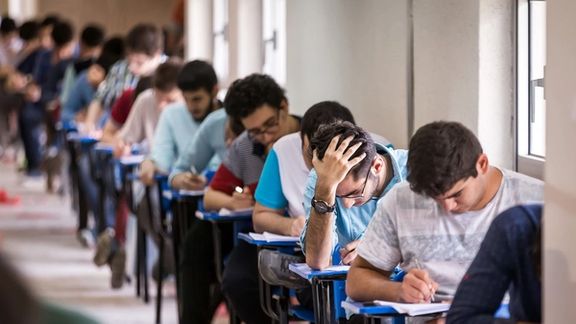Pezeshkian’s government faces challenge of educational disparity

Iran's new President Masoud Pezeshkian’s has admitted to alarming educational disparity between the wealthy and the poor and the decline of the educational system.

Iran's new President Masoud Pezeshkian’s has admitted to alarming educational disparity between the wealthy and the poor and the decline of the educational system.
Critics say the chances of admission to good universities are very low for those who study in public schools, where the quality of education is inferior. Therefore, the children of privileged families who study in private and expensive semi-public schools for “gifted children” make up most of the top 3,000 in the standardized university entrance examinations (Concours).
According to a 2023 study conducted by the Poverty and Inequality Think-Tank , over half of all twelfth-grade students studied in public schools but less than ten percent of these were among the top 3,000 in the Concours.
Pezeshkian, who says “educational justice” is one of the top issues on his reform agenda for the country, addressed the problem in a speech last week at the inauguration ceremony of the new education minister and again in his first televised interview later in the week.
“It is not acceptable for the child of someone who doesn’t have money and connections to study in a school where he may not get a good education … All schools must meet a satisfactory standard. It is unacceptable that all who get to go to university come from families whose children can study in special and private schools,” he said at the ceremony.
In his televised interview he spoke about how his own family could not afford paid education when he and his late wife, both residents at the time, moved to Tehran from Tabriz to study for their sub-specialisation in surgery in the early 1990s. “They wanted money wherever we went [to enroll them],” he said, adding that this made him think deeply about educational disparity.
The performance of students from underprivileged families has hugely dropped in recent years. Speaking to Ham-Mihan newspaper, Pirouz Nami, a teacher from Khuzestan Province, argued that the educational failures result from the country's general economic circumstances.
“Students must help their families with expenses. They work as apprentices and peddlers. Many of them fall asleep in classes. They say they work in cafes and shops until four in the morning. They drop out of school when they fail. We are facing an increase in school dropouts,” he said.
According to a former education minister, Yousef Nouri, over eight million Iranians, nearly 10 percent of all Iranians, are illiterate.
There are several different categories of schools in Iran including public, ordinary semi-public (Heyat Omanayi), semi-public for ‘gifted students’ (SAMPAD), private (khosusi), and special public schools for children of ‘martyrs and veterans’ (Shahed).
Besides good educational opportunities, students who study in Shahed schools also benefit from preferential admission to universities which paves their way to higher positions in the government.
Huge sums from the education budget is spent to promote the Islamic ideology in all schools but ideological training is the most intensive in Shahed schools.
The minister of education in Pezeshkian’s cabinet, Alireza Kazemi, who is one of the ministers most objected to by Pezeshkian’s supporters, said in a speech Sunday that he considered the promotion of religious values including Quranic lessons and holding prayers at the top of the list of his priorities.
Admission fees to all schools other than public schools can be very costly or even unaffordable for ordinary families. Privileged students' families also often spend a fortune on entrance exams preparatory classes and private tutoring to get their children into SAMPAD and some semi-public schools which ordinary families cannot afford as well as preparation for the Concour.
One of the reasons that the government is reluctant to give up the schools for the ‘gifted’ is the propaganda opportunities that these schools provide. Students from these schools have earned over 750 medals for the country since 1987 when Iran took part in international Olympiads for the first time.